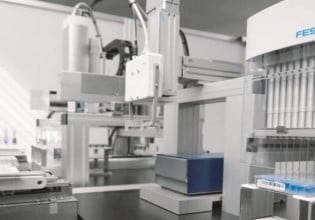J
Which is the best method for Over speed test for a Frame VI, Mark V Controlled Gas Turbine?
Manual says two ways:
1. Under operating conditions by reducing the constant for the trip setpoint.
2. At shutdown condition by simulating the overspeed condition.
There is no Overspeed bolt for trip in this unit, Under operating condition we have to reduce TNKHOS to below TNKR3?
TNKR3 - 107 set point high speed stop
TNKHOS -110 (same for <P> and <Q>)
TNKHOST-113.5 (same for <P> and <Q>)
There is an another method also there, In the screen ‘Over speed test display’ Overspeed test for <P> or Over speed test for <Q> Both set points are same for <P> and <Q>
When <P>-Test is selected, the turbine speed can be increased to max. 113.5% speed. The <P> over speed set point is at 110%. The <Q>-Overspeed protection set point is shifted to the value 113.5% during <P>-Test.
When <Q> test is selected, the turbine speed can be increased to max. 113.5% speed. The <Q> overspeed setpoint is at 110%. The <P>-Overspeed protection setpoint (110%) is then disabled.
There is Note written below:
The constant K_TEST_EN has to be set to a value greater than zero to enable the selection of one of the overspeed tests. After completion of the test, K_TEST_EN must be set back to zero!
I could not find K_TEST_EN in the control constant and in the CSP.
Anybody can help???
Thanks & Regards
Joy
Manual says two ways:
1. Under operating conditions by reducing the constant for the trip setpoint.
2. At shutdown condition by simulating the overspeed condition.
There is no Overspeed bolt for trip in this unit, Under operating condition we have to reduce TNKHOS to below TNKR3?
TNKR3 - 107 set point high speed stop
TNKHOS -110 (same for <P> and <Q>)
TNKHOST-113.5 (same for <P> and <Q>)
There is an another method also there, In the screen ‘Over speed test display’ Overspeed test for <P> or Over speed test for <Q> Both set points are same for <P> and <Q>
When <P>-Test is selected, the turbine speed can be increased to max. 113.5% speed. The <P> over speed set point is at 110%. The <Q>-Overspeed protection set point is shifted to the value 113.5% during <P>-Test.
When <Q> test is selected, the turbine speed can be increased to max. 113.5% speed. The <Q> overspeed setpoint is at 110%. The <P>-Overspeed protection setpoint (110%) is then disabled.
There is Note written below:
The constant K_TEST_EN has to be set to a value greater than zero to enable the selection of one of the overspeed tests. After completion of the test, K_TEST_EN must be set back to zero!
I could not find K_TEST_EN in the control constant and in the CSP.
Anybody can help???
Thanks & Regards
Joy






